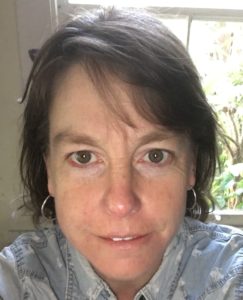 Belinda is a part-time lawyer, adminstrative assistant and mother of two young boys. She is completing a Master of Creative Writing at the University of Sydney and has published work on-line, in the Grieve Anthology 2018 and in the University of Sydney Student Anthology 2016. ‘On Becoming One’ was runner up in the 2019 Deborah Cass Prize for Writing.
Belinda is a part-time lawyer, adminstrative assistant and mother of two young boys. She is completing a Master of Creative Writing at the University of Sydney and has published work on-line, in the Grieve Anthology 2018 and in the University of Sydney Student Anthology 2016. ‘On Becoming One’ was runner up in the 2019 Deborah Cass Prize for Writing.
On Becoming One
I am that one.
The one in question.
Red Jordan Arabateau
Honduran/White Poet
I – A Chronology of Connection
1821 Anglo-yellows are popping up all over the Empire’s pristine lawn faster than they can be pulled out. It is upsetting to the Britons:
The most rapidly accumulating evil in Bengal is the increase of half-caste children . . . their increase in India is beyond calculation . . . it may justly be apprehended that this tribe may hereafter become too powerful for control . . . what may not in the future time be dreaded from them?(1)
The Empire doesn’t want any part of them. Many anglo-yellows are deemed not to be British subjects.(2)
1857 The Natives don’t like anglo-yellows either. (3) So the anglo-yellows try to merge into the background of the Empire. They emphasise their anglo parts, speaking only English and inflicting names like Nigel on their children (4). They disown their yellow parts by helping the Empire enforce a Dandelion-specific caste system based on degrees of yellow.
1898 Anglo-yellows merge so well that they are nearly invisible. An Empire-commissioned list of Burmese cultural sub-groups makes no mention of them.(5) They are overlooked by both Briton and Native welfare and legal systems.
1925 After a while, the anglo-yellows get some laws but not in relation to labour: the Empire needs someone cheap and white-ish to do its low-grade admin tasks. (6)
1939 Marrying an anglo-yellow is a lot like marrying an orangutan (7) , so anglo-yellows tend to marry each other. In this way, they form a distinct cultural community. When anglo-yellows marry, other anglo-yellows display good Empire-building skills by carefully noting degrees of yellow in the marrying parties.
My really-rather-yellow grandmother marries my hardly-that-yellow grandfather, which is well beyond her station (‘Quite!’).
1940 The anglo-yellows just want to be part of something. Well of course they do, because they’ve fallen in love. They sing little songs to the Empire, praising all things British and pointing out their usefulness. (8) They are always on their best behaviour for the Empire and if anyone comes to hurt it, nobody is quicker than the anglo-yellows to put their bodies in the path. (9) Still, after the war, the Britons go back to Britain and the anglo-yellows are left to scatter across the globe like dandelion seeds.
1950 My grandmother and grandfather waft onto a sausage-shaped island that floats like a turd in the water above another forgotten place.
My grandmother is not a happy woman. She picks at her beautiful rather-yellow face until scabs form. When she’s not picking at her face, she picks at her pale daughter, Wendy.
1952 Wendy picks at her beautiful barely-yellow face until it is scarred and pocked. She’s nervy, cries a lot and can’t settle. All my grandparents’ hopes are in their quite-yellow son, David.
1954 My grandparents just want to be part of something. Preferably something powerful. In Papua New Guinea, they borrow money to send really-quite-yellow David to the whitest Queensland boarding school they can find. Alone in post-war Queensland, Jap-yellow David absorbs pressure until his jaw muscles are deformed by constant clenching. Musculature protrudes from either side of his jaw like wing-nuts.
1969 David marries my mother – a relaxed white woman whose family has been part of Australia for generations. My grandparents just can’t get enough of her.
1970 I am born.
1985 I develop an insatiable urge to pick at my face until it is pocked. Thinking it might be helpful, my mother says, “You’re just like Wendy.” When Wendy commits suicide, I distract myself with intensified face-picking.
1995 Someone has been compiling statistics about face-picking and deformed jaw musculature: ‘Racism Linked to Depression and Anxiety in Youth’(10) ; Mental Health Impacts of Racial Discrimination in Victorian CALD Communities(11) ; Stigma and Discrimination Associated with Depression(12) ; Mental Health Impacts of Racial Discrimination in Australia: A Cross Sectional Survey(13) ; Cultural Aspects in Social Anxiety and Social Anxiety Disorder (14). I wonder if there is any connection.
2000 I am friendly with two girls and we do everything together. One has Chinese heritage, the other is Fijian anglo-yellow. I wonder if there is any connection.
2005 I discover Hanif Kureishi is anglo-yellow and think about how his work resonates with me. I wonder if there is any connection.
2014 I stop picking at my face at around the same time that I start writing. I write to make connections between all the disowned parts of myself.
II – Lacuna /la’kjluna , n., pl. –nae. 1. Space or hiatus. From the Latin ‘lacus’ for ‘lake’.
Story 1: Awww. Look at her, e’nt she cute? Belinda at six years old. Blonde hair in a bowl cut juts out at angles from her scalp. Swathe of snot lime-washed across her top lip. Puny chest, white shins covered in bruises. This afternoon, she’s been throwing acorns at the boys next door but now she’s tired. Sitting cross legged on the lounge-room floor, she watches telly in her undies. When the ads come on, she sings a song they’ve learnt at school: ‘Carra Barra Wirra Canna’. It’s a pretty tune and she warbles it exuberantly at the top of her voice:
There’s a lake in South Australia
Little lake with lovely name;
And the stories woven ‘round it;
From the piccaninnies came.
Suddenly, her Dad is there standing before her. “What is that shit you’re singing?” His tone is measured but menacing. She recognises the wretched set of his eyes, the jaw muscle pulsating dangerously and falls silent. She returns her gaze to the television but is watching him from the corner of her eye. He has a habit of lashing out unexpectedly, a clip with his hand or with his blade-sharp tongue. Both equally excoriating.
At school, the kids ask her, “Why is your Dad Chinese?” He is something, Dad, but he’s not Chinese. She doesn’t know much more than that because race is unmentionable in her family. A simple children’s song can set him off.
Now he leaves and she relaxes. Hunched in front of the telly, you might notice that the dome of Belinda’s ribs is like a bell jar. The ‘piccaninnies’ and their lake are sealed in there, along with the race-related stories they might have told. She won’t remember them again until she is an adult and runs across a pile of old school song books at a garage sale. Then she will wonder at the shame and confusion she felt as a child, and at the woven net of silence that she and her Dad are caught up in.
‘Lacuna’. That beautiful word. On one definition, it means ‘space’ or ‘gap’, as in:
The rocket shot off into Outer Lacuna;
Or
You have a lacuna between your front teeth;
Or
There is a lacuna in your family history.
Culture, being an experience that is shared between members of a social group, is usually public. It includes religious beliefs, festivals, stories, arts – all the things that bind people together and give their lives richness and meaning. Culture is something to be celebrated.
But Eurasians under the British Raj were a tiny minority in a multitude of nationals increasingly disaffected with British imperialism. Eurasian ties to the oppressors showed in their very faces and it is no surprise that their exclusion from Indian social and economic life was nearly absolute. In the circumstances, and since many Eurasians were not easily identified as non-white, the thing to do was deny one’s Eurasian identity altogether and align oneself, as far as possible, with the Empire:
“Throughout my life I had asked him why the family was (in India). Were his parents Indian? Did he speak Urdu? Did he have an elephant? He always told me simply, ‘We were an English family who happened to be living in India.”(15)
This strategy was necessary for Eurasians to survive as a culture. Even now in India there remains a vibrant and politically active, though diminishing, Eurasian community. But in my family’s experience, the consequences of silence have been mostly tragic.
Story 2: My grandmother and her sisters were very fond of the school that they boarded at in Moulmein, Burma. It was called St Mathews High School for Girls, and was an Anglican missionary school for Eurasian girls. My grandmother and her sisters were lucky enough to have parents that they stayed with over the school holidays. But it was not uncommon for Eurasian children to be abandoned or removed from their parents and many of my grandmother’s cohorts were orphans.
My grandmother loves to tell us about a time she tried to wear make-up at the school. The nuns told my grandmother, no, you can’t use make-up – there are orphans here and they can’t afford it. There is a faux brightness to the way my grandmother tells this story and she loves re-telling it. With each re-telling, she laughs too sweetly and too insistently. Even as a child, I can sense a discordance in this story that makes me wonder. What is my grandmother is hiding?
III – Straddling the Space
In 2016, in her key-note speech to the Brisbane Writer’s Festival, Lionel Shriver was critical of the increasing presence of ‘cultural misappropriation’ debates in literature. (16) These arguments, regarding the unauthorised use of cultural knowledge and expressions, arise in relation to writing which deals in identities distinct from the author’s own identity. An example that has been controversial in Shriver’s own work is her use of an elderly African-American character though Shriver herself is white. Shriver’s broad approach to these debates is that there can be no ownership in social identity. To hold otherwise, she says, is impractical and burdensome. Since the most that can occur via identity misuse is a few hurt feelings, Shriver is not sure why the debate exists and wonders if it is a fashionable pose. Shriver argues that the cultural misappropriation debate is flawed at its core since social identity is not a real thing:
Membership of a larger group is not an identity. Being Asian is not an identity. Being gay is not an identity. Being deaf, blind, or wheelchair-bound is not an identity, nor is being economically deprived.(18)
Shriver’s 2016 speech is remembered, not just for its content, but for the way she delivered it, donning a cheeky sombrero to underline her arguments about hypersensitivity in Latino cultural debates and comparing herself to a Great White Shark in a sea of earnest community builders. In her reckless approach to wide-spread upset, Shriver reminds me of my favourite iconoclast, Hanif Kureishi, who commenced each morning of filming on the set of My Beautiful Laundrette (19) by getting into a huddle with director Stephen Frears and screaming ‘Filth and Anarchy!”’ repeatedly. Even with the consternation caused by Shriver’s 2016 comments, she hasn’t approached the entrenched controversiality of Kureishi who, it has been suggested, has only narrowly avoided eliciting a fatwa. (20) He is not an Empire Eurasian but a modern Eurasian born and raised in Britain and this culturally-specific heritage is revealed by his notable lack of silence.
But Shriver and Kureishi’s common maverick status is just one of several intersections they seem to share as writers. For instance, when Shriver uses her 2016 speech to rail against the ‘culture police’ who objected to her African-American character, she puts me in mind of the normative provocations frequently posed by Kureish’s identity representations. This was most apparent early in his career when his holistic representations of Asians upset just about everybody – conservative Asian communities, of course, by depicting sexually transgressive Muslims but also progressive Asian commentators by depicting Asians in ways that failed, they thought, to optimize Asian interests: showing Asians in a bad light. (21)
People ask why my Asian characters are bad, and it’s only because villains are more interesting on the whole. I’m very interested in how complex people are. People in films are often divided very quickly. You know early on who’s good and who’s bad. But I’m more interested in how complex we all are.”(22)
Shriver, too, resists treating her minority identities with kid gloves (23) and she might agree with Kureishi who considers that the freedom to depict the whole complexity of a character is as important as Art itself, which “represents freedom of thought – not merely in a political or moral sense – but the freedom of the mind to go where it wishes; to express dangerous wishes.”(24)
The most obvious result of the freedom that Kureishi claims for his characters in bucking identity norms is fun. See Omar in My Beautiful Laundrette allying himself with the best-looking member of the local skin-head gang to establish a successful business and score nookie. Or Karim, in Buddah of Suburbia, consenting to play a humiliating depiction of Mowglie and thereby grounding his acting career, escaping suburbia and scoring a mountain of nookie. Kureishi extends this freeing facility to his Asian characters – such as Karim’s father who shamelessly squeezes himself into the ‘Oriental Mystic’ persona, providing himself with a new income source and, you guessed it, scoring nookie.
But another result of all this opportunism is power:
The [mulatto] kids I knew were not tragic. They were like Karim: pushy, wild, charismatic, street-smart, impudent, often hilarious. Despite their relatively lowly position in the British class system they suspected they were cool, and knew they had talent and brains.(25)
Divested of the constraints of ‘proper’ Asian representations, Kureishi’s characters are free to consider how their internal desires and interests might be met given their oppressive externalities. Their identity lacuna becomes a grab-bag to be dipped into for whichever persona best suits for the time being. English one day, Indian the next.(26)
This shuffling of identity norms can be experienced as subversive but it is key to a powerful Eurasian identity. Of course it is. The almost (27) , the in-between(28) , the space in the Empire’s cultural index. Our mojo was always going to be mutable.
Which leads to a further overlap evident in Shriver and Kureishi’s understandings about writing identity: an awareness of identity as a means of accruing power. Shriver terms this aspect of identity, ‘offendedness as a weapon’. She could be referring to Tracey, an actress in Karim’s acting troupe, who takes advantage of her minority racial status and her cleaning-lady mother to manipulate the white guilt of the rest of the troupe. Her political aptitude helps her to obtain the dramatic representations she wants.(29)
But it is within this particular overlap that Shriver and Kureishi’s understandings on writing identity finally diverge. For Shriver’s 2016 comments on the politicisation of identity, ‘gotcha hypersensitivity’, reveal a blind spot at the precise point of Kureishi’s most essential acuity. The divergence is revealed here in the reckoning that Omar’s alliance with Johnny requires before it may progress:
What were they doing on marches through Lewisham? It was bricks and bottles and Union Jacks. It was immigrants out. It was kill us. People we knew. And it was you. He saw you marching. You saw his face, watching you. Don’t deny it. We were there when you went past . . . Papa hated himself and his job. He was afraid on the streets for me . . . Oh, such failure. Such emptiness. (30)
And again when Karim is forced to face the folly he has committed against himself in yearning for the English rose, Elenor;
My depression and self-hatred, my desire to mutilate myself with broken bottles, and numbness and crying fits, my inability to get out of bed for days and days, the feeling of the world moving in to crush me, went on and on . . .(31)
Also apparent in Karim’s experience of school. Enduring the nick-names Shitface and Curryface is least of his problems. He is also punched and kicked to the ground by his teachers, threatened with chisels to the throat, imprisoned and branded with hot metal: Every day, I considered myself lucky to get home from school without serious injury. (32)
Pain. Shriver doesn’t get it. This is why she acknowledges every type of identity politics but her own; why she resents being asked to consider others’ perspectives; why, to her, identity politics is a ‘tempest in a tea-cup’ of hurt feelings.
Admittedly, Kureishi has an advantage in perceiving identity injuries. First Asian at his Bromley Tech High School, Pakistani Pete to his teachers, squired around Pakistani beating grounds by his skin-head mates, Kureishi speaks openly about intense feelings of shame and loneliness.[33] He has said that the war-zone traumas that Karim endures at high school are autobiographical.
Lived experience is not essential to empathy and pain is not unique to Eurasians. But I hope that any person endeavoring to represent Eurasian identity is capable of seeing Eurasian pain, just as I hope that any writer advocating the free-wheeling adoption of others’ cultural identities, is also capable of seeing pain.
Until then, I might gather my Eurasian parts around me and wield them, as Shriver could have predicted, like weapons. Because my father is just a few years older than Kureishi. Because like Kureishi, my father has a string of ‘firsts’ – first non-white at his elite Queensland boarding school, first non-white in his course at university, first non-white in the Queensland Veterinary Association. Because, after 49 years I still don’t know what that was like for him and the silence feels ominous.
Silence is the flipside of offendedness. And it has, until relatively recently, been the most salient feature of identity writing:
At their best the Eurasians of the novels are as kindhearted as their natural indolence and slovenliness will allow; at their worst they are heartless, vicious, self-seeking, and completely unscrupulous. At a time when racial separateness, symbolizing racial superiority, seemed so necessary for the task of ruling an empire, the Eurasians posed a special kind of threat. The trouble with half-castes, argue the novels, is that they take only the worst qualities of each parent race – the stubbornness and pride of the English, without their courage and principle; the deviousness of the Indians, without their cultivation and dignity.(34)
It is the novelty of identity debates that causes Shriver to suspect fashionable posturing but I hope these debates are not just a passing fad. I feel happy to see Eurasians and others wield their offendedness. Let’s keep it up because I think we’re making something new and interesting, something that might be a useful political implement in the management of in that other political, and potentially cruel, implement – the appropriated identity.
IV – Lacuna /la’kjluna , n., pl. –nae. 1. Space or hiatus. 2. A cavity or depression in bone, containing nucleate cells.
Story 3 At the age of about 23, I reach a kind of hiatus in life. At a dead end in my relationship and in my studies, I schlepp around in someone else’s sharehouse and do shift-work. I am on hold until I can save enough money to escape overseas. I brood. I have strange dreams. I come across My Beautiful Laundrette at the local video store. It appears that Omar has also been on hold and knows what to do. I watch it and feel myself start to heal. Parts of myself are being knitted together. I wait until the house is empty and play it and re-play it. Then I play it again. It starts to run through my veins. I am absorbing a story intravenously, like fluid through a drip feed.
As well as referring to a gap or hiatus, ‘lacuna’ is an anatomical term, referring to cavities in the bone that cup its living matter: ‘osteocytes’ or bone cells. On this definition, space is not an absence but a presence of life-giving possibility.
A story can be like that. The delight that spans the abyss of unbelonging (35), the water play across a racial schism(36) . A story can take a lacuna and make it world-cracking, life-changing, art-inspiring.(37) That sort of connectivity can actually save lives:
Kureishi’s “almost” got me. Finally, an acknowledged duality, a nuanced fluidity, a spectrum. I didn’t have to be one or the other, I could be in-between. I could be almost.(38)
Kureishi’s characters were vibrant because the stories he told about their racial ambivalence made something from it – a Eurasian identity. It was enough to lift the writer Shukla out of her suicidality[39] and I wonder whether things might have been different for my aunt (my aunt, my aunt; acerbic, funny, tender-hearted, sad; I remember her slender hands; it is said I have hands like hers) if she had known about these sorts of identities when she was struggling.
Maybe not though. Because she had to deal with, not just the Empire’s identity lacuna, but the one created by her own family.
My grandmother was pleased when the nuns drew a distinction between herself and the Moulmein orphans because she had more in common with the orphans than she cared to admit. Wrenched away from her Native mother, her culture, the language she had spoken as a baby. Sent to school to be re-shaped in the ways of the Empire. Underlying my grandmother’s story was the desire to separate from her orphaned cohort and from the horrifying suspicion that she, like them, was unwanted. A weed thrown onto a garbage heap. One of the Empire’s discards. Her story was not a connection but an attempt at disconnection. It was another type of silence.
All to no avail. Come Independence, my grandmother’s British father would return to his British family and she would be left wheeling across the globe like the orphan she truly was. Nothing between my grandmother and oblivion but the Eurasian family she had married into, itself intent on performing an act of disconnect because she was way too yellow.
There’s a curious glitch in Shriver’s 2016 speech. When she makes her statement that identity doesn’t exist, she does so baldly, without any logical underpinning, and nests the observation amongst unrelated arguments. It stands out in an otherwise flawless stream of witticisms and I don’t think it’s an oversight. I think Shriver is really saying that social identity doesn’t matter. We writers can do what we like with social identity because what difference does it make?
Shriver’s arguments about identity ownership have become pertinent again in relation to another in-betweener (40) – Bruce Pascoe, author of much-lauded work Dark Emu (41) whose genealogical connection to his Bunurong and Yuin identity is too tenuous for some. The connection between genealogy and identity is a central one. But an equally important insight to be gleaned from Pascoe’s case is apparent, not in the case itself, but in the furor surrounding it: community schisms, police investigations, political intervention, advisory board re-shuffles.
Social identity is incredibly important to us. We can expect writers to take care with our social identity because it matters. It matters in the same way as our stories matter. It matters, in fact, in the same way that we ourselves matter because being connected to a larger whole is an essential aspect of what it means to be human.
I have one last story. It is my grandmother’s story but she had no voice for it. I heard it, once only, from my father:
Story 4: Before settling in New Guinea, my grandparents alight briefly in Sydney where they stay with friends at Kirribilli. Each day, my grandmother takes my Dad and his sister to a playground on Kirribilli Bay. While my Dad and his sister play on the swings, my grandmother goes to the water’s edge where there is a low limestone wall separating the Bay from the park.
All around the edges of the strange harbour, sailing skips bob and duck. Diamond wavelets sparkle and recede back into the grey-green water. But before my grandmother, the water is dark and eerie, blackened by kelp which beckons to my grandmother like writhing arms. Come, come, enter our shadowy depths. Join us.
On the swings, my dad and his sister keep their small backs to my grandmother and do not turn around. They know what will happen, and cannot bare the alarming sight. My grandmother puts her knees to the limestone wall, leans out as far as she can over the Bay’s arc and sobs. It seems to last for hours. Endless tears fall from her eyes in a single diamond stream and join the dark water. She is submerged by sadness.
My grandmother saw her beloved mother maybe one more time in her life. She almost never saw her sisters and brother who were scattered across the world. She lived, not just without her family, but without stories to provide her with an understanding of her place in a community of others. She faced her abandonment in isolation.
How could she know that she was never the weed? How could she know that she was the resilient herb? The Dandelion with its face turned always to the limitless sky.
Lest my family’s story be dismissed as a quirk of history, I want to finish with an aside I came across recently in Alexander Chee’s luminous book of autobiographical essays. (42) Chee is an Amerasian whose heritage is partly Korean and he describes his family’s vigilance whenever, as a child, he visited relatives living in Korea:
Biracial Korean and white Amerasian children in Seoul in 1968 . . . were often kidnapped and sold as, for some time, your patrimony was your access to personhood. Put another way, if your father was a white GI, no government authority automatically thought of you as a citizen. (43)
The Empire has ended but my family’s story will never end. There will always be fly-in fly-out incursions of boundaries, the breaches of war or commerce that leave in their wake a trail of people who do not know who they are. Untethered and drifting but I won’t abandon them. I won’t let them float away. I’ll build them a net of connection and join them up with my stories.
Notes
1. Viscount George Valentia, cited in Gist, Noel P. and Roy Dean Wright, Marginality and Identity: Anglo-Indians as a Racially-Mixed Minority in India. Leiden, (Netherlands: E. J. Brill 1973) at 13
2. Brent Otto, “Navigating Race and National Identity for Anglo-indians” International Journal of Anglo-Indian Studies 15 no. 1 (2015) at 17
3. Eurasian communities targeted in the Indian Rebellion 1857. “Shunned by the Indians, despised by the whites . . . the unfortunate Anglo-Indian found himself cut off from the main economic and social bases of Indian life.” Correspondent of the Manchester Guardian in 1933 cited in L Jacobsen, The Eurasian Question: The Colonial Position and Postcolonial Options of Colonial Mixed Ancestry Groups from British India, Dutch East Indies and French Indochina Compared (Uitgeverij Verloren 2018) at 82, web, accessed 10 January 2019, See also Mills, M. “A Most Remarkable Community: Anglo-Indian Contributions to Sport in India” Contemporary South Asia 10.2 (2001) at 225; Mannsaker, F. “East and West: Anglo-Indian Racial Attitudes as Reflected in Popular Fiction, 1890-1914” Victorian Studies 24.1 (1980) at 37.
4. Kris Griffiths, “Anglo-Indians: Is their culture dying out?” BBC Magazine, 4 January 2013, web, accessed 3 February 2018
5. Elementary Handbook of the Burmese Language 1898 cited in Edwards, P “Half-Cast: Staging Race in British Burma.” Postcolonial Studies 5.3 (2002) at 285
6. Gist, Noel P. and Roy Dean Wright, Marginality and Identity: Anglo-Indians as a Racially-Mixed Minority in India (Netherlands Leiden1973), 18
7. Hervey, A soldier of the Company, cited in Sen, A Distant Sovreignity, (Routledge 2002) 148
8. ‘The Eurasian Anthem’ cited in Brent Otto, “Navigating Race and National Identity” International Journal of Anglo-Indian Studies 15 no. 1 (2015) 14
9. Mills, M “A Most Remarkable Community: Anglo-Indian Contributions to Sport in India” Contemporary South Asia 10.2 (2001): 223–236, web, accessed 11 1 20, detailing disproportionate levels of Eurasian military and sporting achievement. Probably Empire Eurasians display disproportionate achievement in entertainment also, but no one in public life will admit to their Eurasian heritage: Kris Griffiths, op cit.
10. http://newsroom.melbourne.edu/news/racism-linked-depression-and-anxiety-youth;
11. http://newsroom.melbourne.edu/news/racism-linked-depression-and-anxiety-youth
12. https://www.beyondblue.org.au/docs/default-source/policy-submissions/stigma-and-discrimination-associated-with-depression-and-anxiety.pdf?sfvrsn=0
13. https://www.beyondblue.org.au/docs/default-source/policy-submissions/stigma-and-discrimination-associated-with-depression-and-anxiety.pdf?sfvrsn=0
14. https://www.ncbi.nlm.nih.gov/pmc/articles/PMC3075954/
15. Kris Griffiths, op cit. I experienced a flash of recognition when Griffiths says: ‘The Anglo-Indians also have a distinctive cuisine – jalfrezi was a staple in our household, but unlike anything on Indian restaurant menus.’ Even the most slavish imitators of British customs would balk at adopting that country’s cuisine. My grandmother cooked beautiful curries that were like Asian curries but different, as well as a type of balachaung (shrimp paste) that we ate on toast and which I have never tasted elsewhere
16. Shriver, L “I Hope the Concept of Cultural Appropriation is a Passing Fad” The Guardian 13 September 2017, web, 3 February 2020
17. Abdel-Magied, Y “As Shriver Made Light of Identity I had no Choice but to Walk Out” The Guardian 10 September 2016, web, 2 January 2020; Wong Y, “Dangerous Ideas” inexorablist.com 8 September 2016 web, accessed 18 January 2020
18. Shriver, L op cit.
19. Frears, Stephen. et al. My Beautiful Laundrette. London: FilmFour, 1985. Film.
20. For Kureishi’s particularly controversial status, see Ruvani Ranasinha, South Asian Writers in Twentieth Century Britain: Culture in Translation (Oxford Scholarship Online 2011) 260, comparing Kureishi’s critical reception to that of Meena Syal; Alberto Fernandez, ‘Hanif Kureishi: The Assemblage of a Native Informant’ Queering Islam 6 March 2015 web 2 Jan 2020, suggesting Kureishi is as controversial than the fatwa-eliciting Rushdie, Mick Brown ‘Hanif Kureishi: A Life Laid Bare’ The Telegraph 23 February 2008:
21. Kureishi, Hanif. The Buddha of Suburbia , London, Faber and Faber, 1990, print at 180
22. Interview with Stephen Frears and Hanif Kureishi, The Movie Show, 7 July 1988, www.sbs.com.au/ondemand/video/11716675713/sammy-and-rosie-get-laid-stephen-frears-and-hanif-kureishi
23. Shriver, L, op cit, “That’s no way to write. The burden is too great, the self-examination paralysing.”
24. Hanif Kureishi, ‘Something Given: Reflections on Writing’ in Collected Essays Faber and Faber 2013 at 286
25. Zaidie Smith, ‘Introduction’ to Kureishi, H, op cit, vi
26. Kureishi, H, op cit, at 213: “If I wanted the additional personality bonus of an Indian past, I would have to invent it.”
Ibid at 3
28. Kureishi, H , My Beautiful Laundrette and The Rainbow Sign, Boston: Faber and Faber, 1986. Print.
29. Her representations are later shown to be impotent in comparison to Karim’s as they require validation by white liberal authority. But this does not detract from the skillful way in which she has managed her minority identity.
30. Kureishi, H, op cit 84
31. Ibid 250
32. Ibid 63
33. Kureishi, H, op cit .12
34. Mannsaker, Frances M. “East and West: Anglo-Indian Racial Attitudes as Reflected in Popular Fiction, 1890-1914.” Victorian Studies, vol. 24, no. 1, 1980, at 33
35. With thanks to Rilke, “As Once the Winged Energy of Delight”, allpoetry.com, web, 2 February 2020
36. Kureishi, H, op cit 111
37. Sandhu, S “Paradise Syndrome”, London Review of Books, 18 May 2000; Fortini A, “From Justin Bieber to Martin Buber, Zadie Smith’s Essays Showcase Her Exuberance and Range”, nytimes.com, 21 February 2018, web, 2 February 2020
38. Shukla, N, “How the Buddha of Suburbia Let Me Into a Much Wider World” The Guardian, 17 February 2017 web 2 February 2020
39. Shukla N, loc cit.
40. Pascoe identifies with both white and Indigenous aspects of his heritage, “Andrew Bolt’s Disappointment”, griffithreview.com, web, 2 February 2020
41. Pascoe, Bruce. Dark Emu : Black Seeds Agriculture or Accident? Sydney: Magabala Books, 2014. Print.
42. Chee A, How to Write an Autobiographical Novel, London:Bloomsbury, 2018
43. Loc cit at 182
 Take Care
Take Care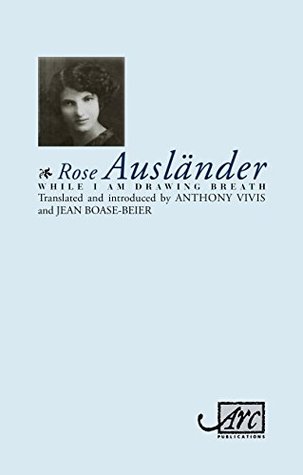 While I am drawing breath
While I am drawing breath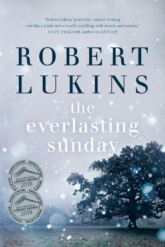 The
The Our Shadows
Our Shadows Admit the Joyous Passion of Revolt
Admit the Joyous Passion of Revolt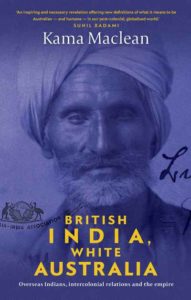 British India, White Australia
British India, White Australia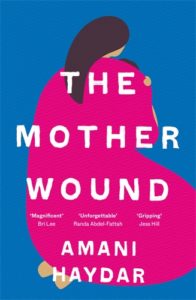 The Mother Wound
The Mother Wound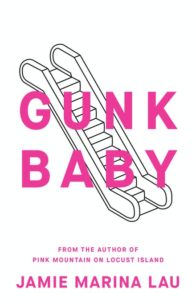 Gunk Baby
Gunk Baby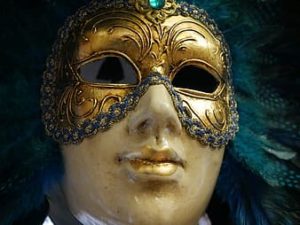 Anonymous is a POC health worker and poet living in one of the LGAs on unceded Gadigal country. They write on the Covid delta strain crisis.
Anonymous is a POC health worker and poet living in one of the LGAs on unceded Gadigal country. They write on the Covid delta strain crisis.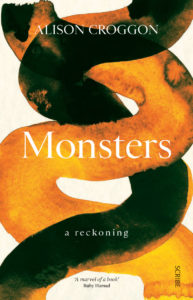 Monsters
Monsters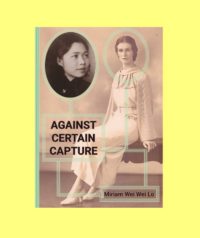 Against Certain Capture
Against Certain Capture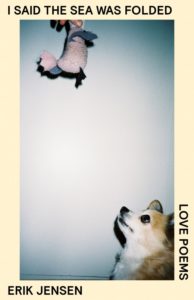 I Said The Sea Was Folded
I Said The Sea Was Folded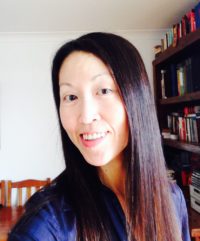 Isabelle Li is a Chinese Australian writer and translator. She has published in various anthologies and literary journals in Australia including The Best Australian Stories, Southerly, Westerly and UTS Writers’ Anthology. Her collection of short stories A Chinese Affair was published by Margaret River Press in 2016. Her prose translations have appeared in Sydney Review of Books and her poetry translations in Mascara, World Literature and Works. Her Chinese translation of Sebastian Barry’s novel The Secret Scripture is published by Zhejiang Literature; Art Publishing House. Isabelle is currently studying her Doctor of Creative Arts at Western Sydney University.
Isabelle Li is a Chinese Australian writer and translator. She has published in various anthologies and literary journals in Australia including The Best Australian Stories, Southerly, Westerly and UTS Writers’ Anthology. Her collection of short stories A Chinese Affair was published by Margaret River Press in 2016. Her prose translations have appeared in Sydney Review of Books and her poetry translations in Mascara, World Literature and Works. Her Chinese translation of Sebastian Barry’s novel The Secret Scripture is published by Zhejiang Literature; Art Publishing House. Isabelle is currently studying her Doctor of Creative Arts at Western Sydney University. Timmah Ball is a non-fiction writer, researcher and creative practitioner of Ballardong Noongar heritage whose practice is influenced by a short career in urban planning. Her writing has appeared in a range of anthologies and literary magazines such as The Sydney Review of Books, Meanjin, The Griffith Review and Columbia University’s The Avery Review. In 2016 she won the Westerly Patricia Hackett Prize and is currently an Arts House Makeshift Publics artist in resident and editor of First Nations writing for The Westerly Magazine.
Timmah Ball is a non-fiction writer, researcher and creative practitioner of Ballardong Noongar heritage whose practice is influenced by a short career in urban planning. Her writing has appeared in a range of anthologies and literary magazines such as The Sydney Review of Books, Meanjin, The Griffith Review and Columbia University’s The Avery Review. In 2016 she won the Westerly Patricia Hackett Prize and is currently an Arts House Makeshift Publics artist in resident and editor of First Nations writing for The Westerly Magazine.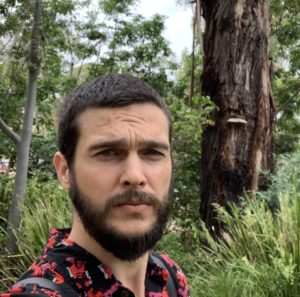 Luke Patterson is a Gamilaroi poet and folklorist living on Gadigal lands. He is interested in the ways bioregional identities and consciousness are expressed through localised and vernacular forms. Luke’s research and creative pursuits are grounded in his extensive work with Aboriginal and other community-based organizations across Australia.
Luke Patterson is a Gamilaroi poet and folklorist living on Gadigal lands. He is interested in the ways bioregional identities and consciousness are expressed through localised and vernacular forms. Luke’s research and creative pursuits are grounded in his extensive work with Aboriginal and other community-based organizations across Australia. Saba Vasefi’s personal lived experience as a refugee and exiled feminist poet and writer together gives her unique experience and insight.
Saba Vasefi’s personal lived experience as a refugee and exiled feminist poet and writer together gives her unique experience and insight. 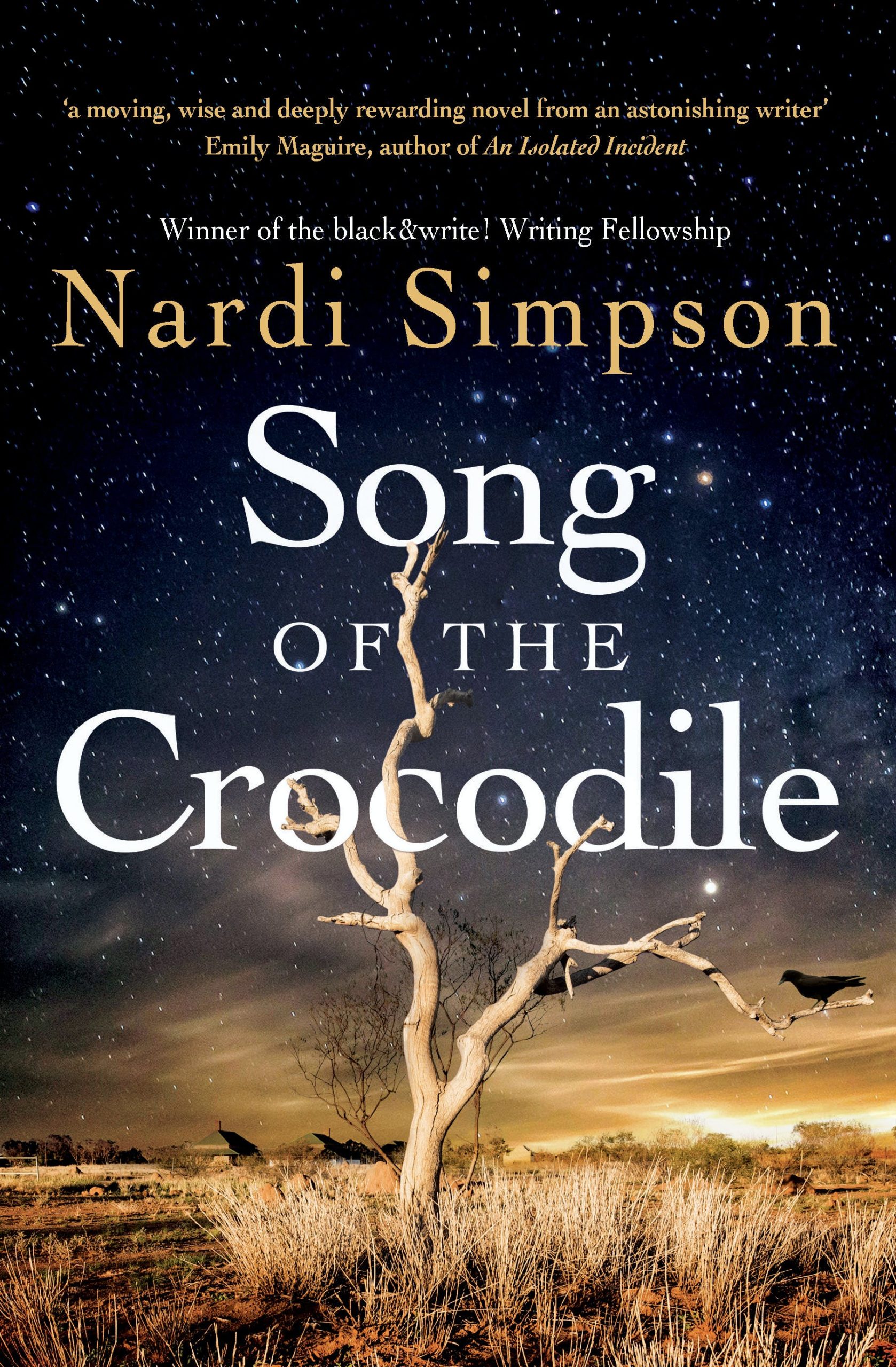 Song of the Crocodile
Song of the Crocodile  Michael Aiken is a four-time recipient of a unique and delightful child, and the founder, owner and servant-in-chief of Garden Lounge Creative Space, Sydney’s only specialist poetry shop and licenced café. His first poetry collection, A Vicious Example (Grand Parade 2014) was shortlisted for the Kenneth Slessor Poetry Prize, the Mary Gilmore Prize and an Australian Book Design Award. His second book, the verse novel Satan Repentant (UWAP 2018) was commissioned by Australian Book Review for their inaugural Laureate’s Fellowship, as selected and mentored by David Malouf. His most recent poetry collection is The Little Book of Sunlight and Maggots (UWAP 2019).
Michael Aiken is a four-time recipient of a unique and delightful child, and the founder, owner and servant-in-chief of Garden Lounge Creative Space, Sydney’s only specialist poetry shop and licenced café. His first poetry collection, A Vicious Example (Grand Parade 2014) was shortlisted for the Kenneth Slessor Poetry Prize, the Mary Gilmore Prize and an Australian Book Design Award. His second book, the verse novel Satan Repentant (UWAP 2018) was commissioned by Australian Book Review for their inaugural Laureate’s Fellowship, as selected and mentored by David Malouf. His most recent poetry collection is The Little Book of Sunlight and Maggots (UWAP 2019).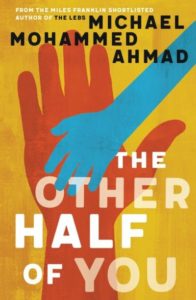 The Other Half of You
The Other Half of You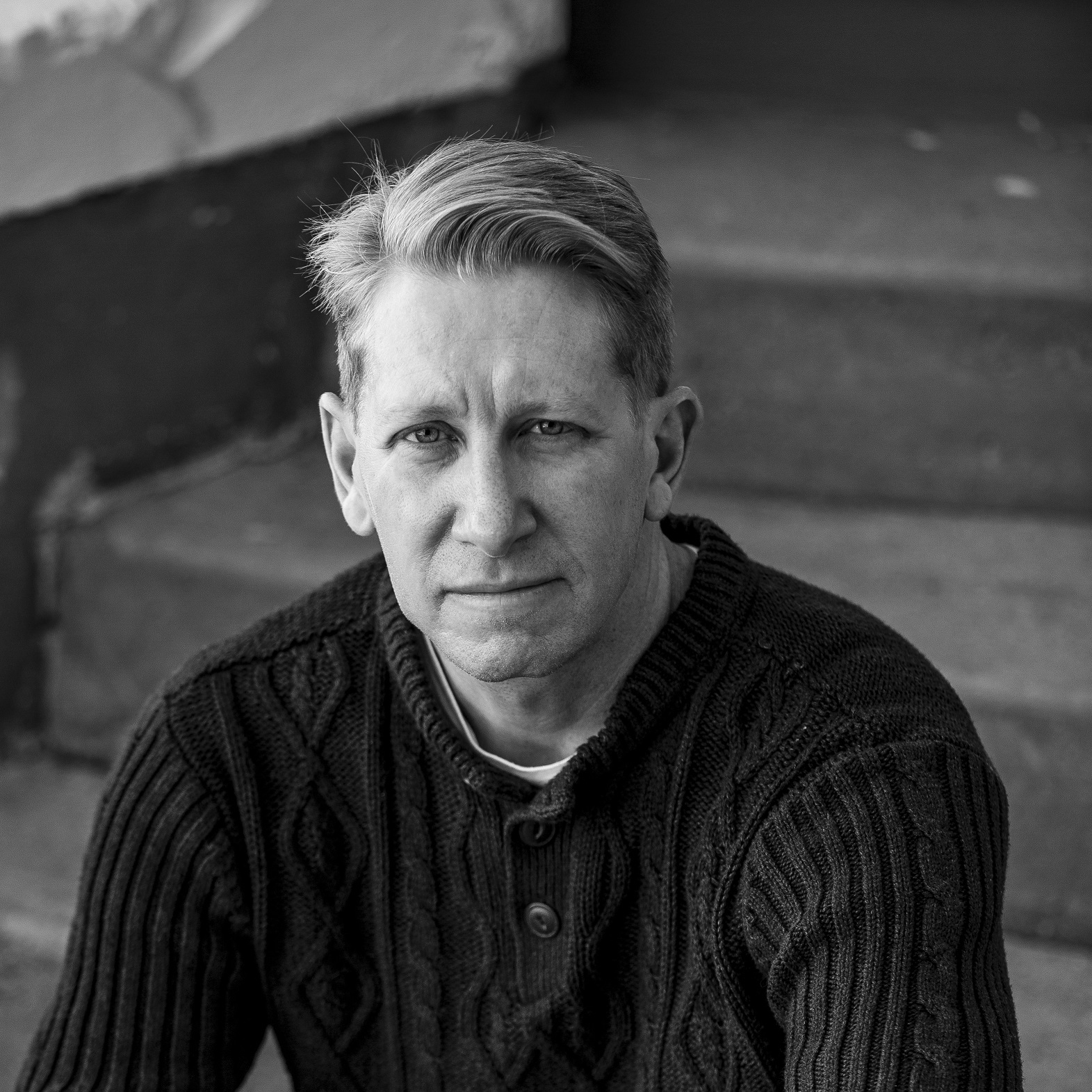 Nathanael O’Reilly is an Irish-Australian residing in Texas. His books include (Un)belonging (Recent Work Press, 2020); BLUE (above/ground press, 2020); Preparations for Departure (UWAP, 2017), named a Book of the Year in Australian Book Review; Cult (Ginninderra Press, 2016); Distance (Ginninderra Press, 2015); Suburban Exile (Picaro Press, 2011); and Symptoms of Homesickness (Picaro Press, 2010). More than 200 of his poems have appeared in journals and anthologies published in thirteen countries, including Antipodes, Anthropocene, Backstory, Cordite, fourW, FourXFour, Headstuff, Marathon, Mascara, Postcolonial Text, Skylight 47, Snorkel, Strukturiss, Transnational Literature, Westerly and The Newcastle Poetry Prize Anthology 2017.
Nathanael O’Reilly is an Irish-Australian residing in Texas. His books include (Un)belonging (Recent Work Press, 2020); BLUE (above/ground press, 2020); Preparations for Departure (UWAP, 2017), named a Book of the Year in Australian Book Review; Cult (Ginninderra Press, 2016); Distance (Ginninderra Press, 2015); Suburban Exile (Picaro Press, 2011); and Symptoms of Homesickness (Picaro Press, 2010). More than 200 of his poems have appeared in journals and anthologies published in thirteen countries, including Antipodes, Anthropocene, Backstory, Cordite, fourW, FourXFour, Headstuff, Marathon, Mascara, Postcolonial Text, Skylight 47, Snorkel, Strukturiss, Transnational Literature, Westerly and The Newcastle Poetry Prize Anthology 2017.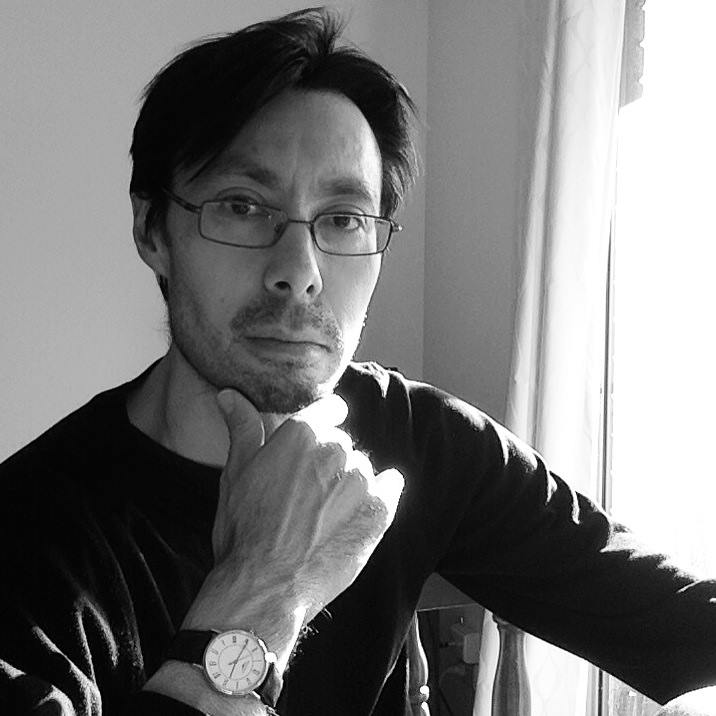 Paul Dawson’s first book of poems, Imagining Winter (IP, 2006), won the national IP Picks Best Poetry award in 2006, and his work has been anthologised in Contemporary Asian Australian Poets (Puncher & Wattmann, 2013) and Harbour City Poems: Sydney in Verse 1888-2008 (Puncher & Wattmann, 2009). His poetry and fiction appear in journals such as Meanjin, Southerly, Westerly, Island, Overland, Cordite Poetry Review, Peril Magazine, Australian Poetry Journal and The Sydney Morning Herald. Paul is currently an Associate Professor in the School of the Arts and Media at the University of New South Wales.
Paul Dawson’s first book of poems, Imagining Winter (IP, 2006), won the national IP Picks Best Poetry award in 2006, and his work has been anthologised in Contemporary Asian Australian Poets (Puncher & Wattmann, 2013) and Harbour City Poems: Sydney in Verse 1888-2008 (Puncher & Wattmann, 2009). His poetry and fiction appear in journals such as Meanjin, Southerly, Westerly, Island, Overland, Cordite Poetry Review, Peril Magazine, Australian Poetry Journal and The Sydney Morning Herald. Paul is currently an Associate Professor in the School of the Arts and Media at the University of New South Wales.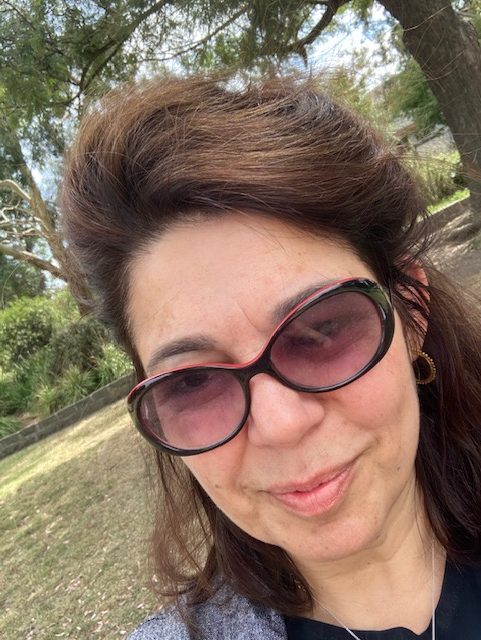 Vasilka Pateras is a Melbourne-based poet and emerging writer whose work is published in n-SCRIBE, Mediterranean Poetry, The Blue Nib and Poetry on the Move. She regularly reads as part of the Melbourne Spoken Word community.
Vasilka Pateras is a Melbourne-based poet and emerging writer whose work is published in n-SCRIBE, Mediterranean Poetry, The Blue Nib and Poetry on the Move. She regularly reads as part of the Melbourne Spoken Word community.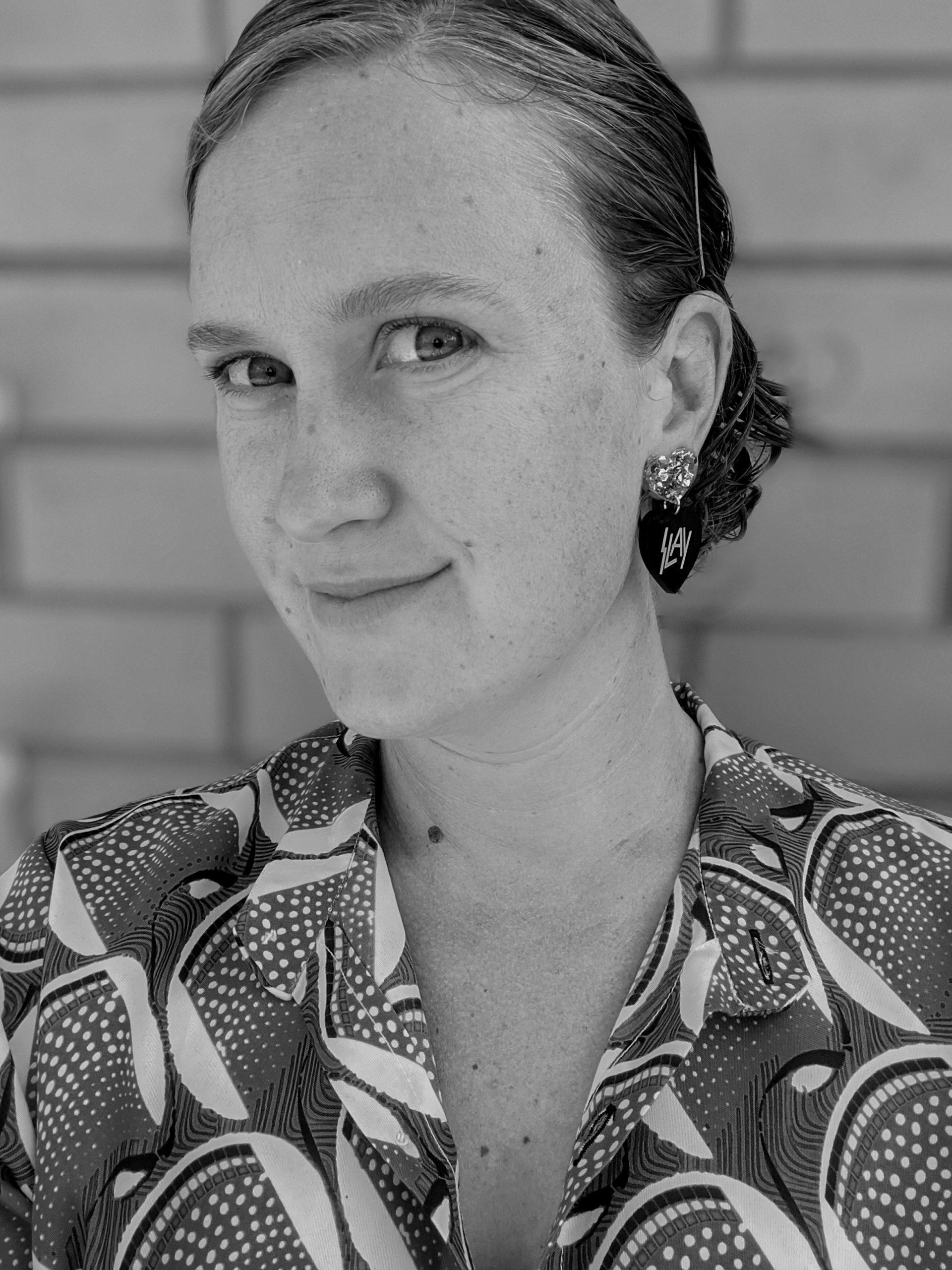

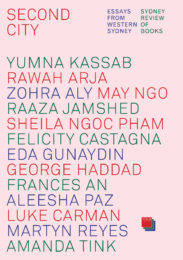 Second City: Essays From Western Sydney
Second City: Essays From Western Sydney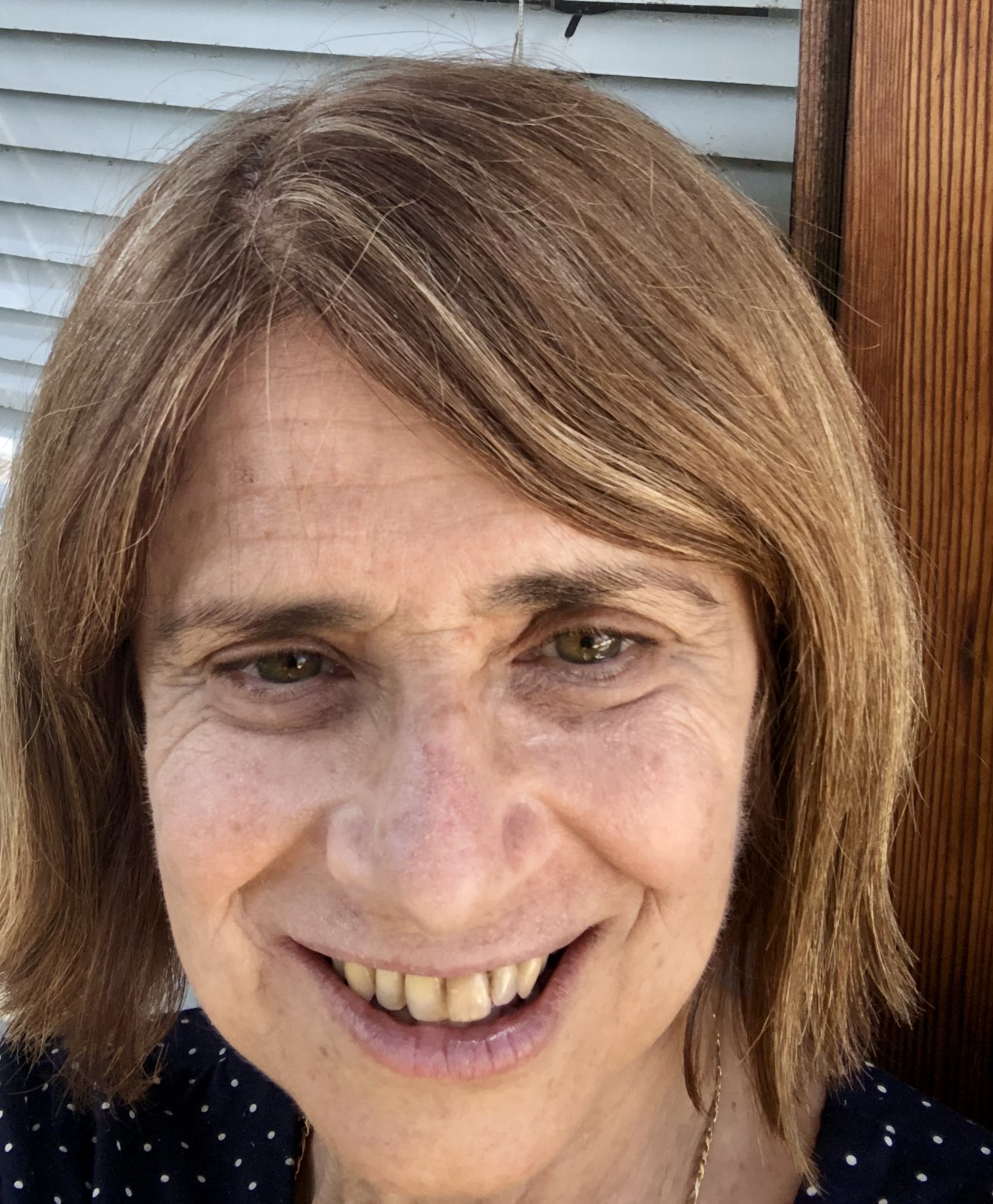 Zoe Karpin lives in Sydney’s inner west with her partner and dog and also works as a Learning and support teacher at a south west multicultural Sydney High School. She has had short stories published in journals such as Going Down Swinging, Gathering Force, Hecate & Femzine recently and online journals such as Dotlit and Sūdō journal recently.
Zoe Karpin lives in Sydney’s inner west with her partner and dog and also works as a Learning and support teacher at a south west multicultural Sydney High School. She has had short stories published in journals such as Going Down Swinging, Gathering Force, Hecate & Femzine recently and online journals such as Dotlit and Sūdō journal recently.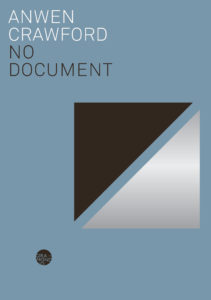 No Document
No Document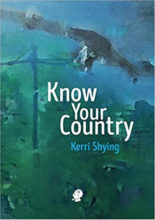 Know Your Country
Know Your Country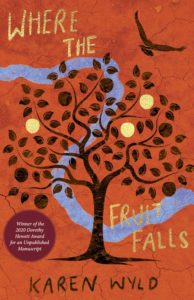 Where the Fruit Falls
Where the Fruit Falls

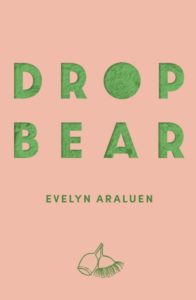 Dropbear
Dropbear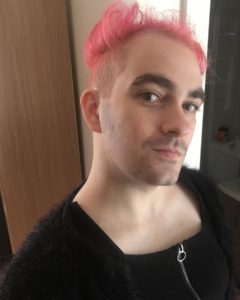 Josie/Jocelyn Deane is a writer/student at the University of Melbourne. Their work has appeared in Cordite, Australian Poetry Journal and Overland, among others. In 2021 they were one of the recipients of the Queensland Poetry Festival Ekphrasis award. They live on unceded Wurundjeri land.
Josie/Jocelyn Deane is a writer/student at the University of Melbourne. Their work has appeared in Cordite, Australian Poetry Journal and Overland, among others. In 2021 they were one of the recipients of the Queensland Poetry Festival Ekphrasis award. They live on unceded Wurundjeri land.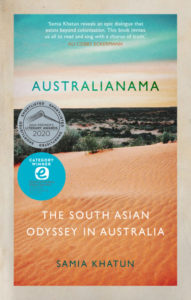
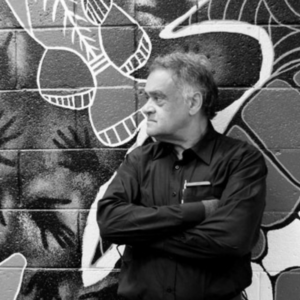 Paul Collis is a Barkindji person. He was born in Bourke, in far north/west NSW. His early life was informed by Barkindji and Kunya and Murawarri, and Wongamara and Nyempa story tellers and artists. Paul grew hearing traditional stories of Aboriginal culture and Law. He earned a Doctorate at University Canberra in 2015. His first novel, Dancing Home, won the 2017 David Uniopon Award for a previously unpublished work by an Indigenous author, and the 2019 ACT Book of the year Award. Nightmares Run Like Mercury his first poetry collection is published by Recent Studies Press in 2021. Paul lives in Canberra and teaches occasionally at University of Canberra.
Paul Collis is a Barkindji person. He was born in Bourke, in far north/west NSW. His early life was informed by Barkindji and Kunya and Murawarri, and Wongamara and Nyempa story tellers and artists. Paul grew hearing traditional stories of Aboriginal culture and Law. He earned a Doctorate at University Canberra in 2015. His first novel, Dancing Home, won the 2017 David Uniopon Award for a previously unpublished work by an Indigenous author, and the 2019 ACT Book of the year Award. Nightmares Run Like Mercury his first poetry collection is published by Recent Studies Press in 2021. Paul lives in Canberra and teaches occasionally at University of Canberra. Motherhood
Motherhood Navigable Ink
Navigable Ink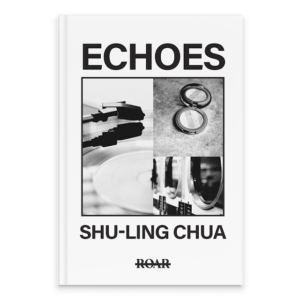 Echoes
Echoes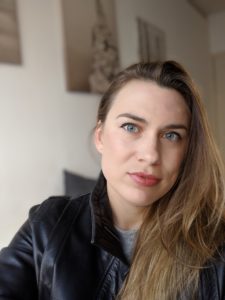 Dasha Maiorova is a Belarus-born writer who lives and works on Dharawal Country in Sydney’s southwest. In 2020 she was runner-up for the Deborah Cass Prize, and won the Heroines Women’s Writing Prize for fiction. Her writing has been published in The Big Issue, Voiceworks and Baby Teeth. She writes about books, reading and more at www.dashamaiorova.com
Dasha Maiorova is a Belarus-born writer who lives and works on Dharawal Country in Sydney’s southwest. In 2020 she was runner-up for the Deborah Cass Prize, and won the Heroines Women’s Writing Prize for fiction. Her writing has been published in The Big Issue, Voiceworks and Baby Teeth. She writes about books, reading and more at www.dashamaiorova.com
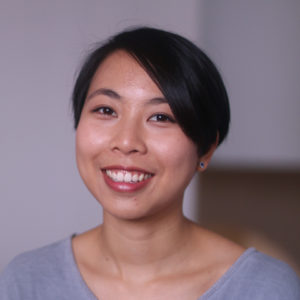 Karina Ko lives in Sydney where she graduated in Law and in Arts. Her parents came from Hong Kong. She is working on a collection of short stories.
Karina Ko lives in Sydney where she graduated in Law and in Arts. Her parents came from Hong Kong. She is working on a collection of short stories.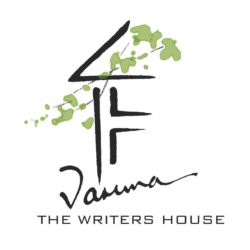
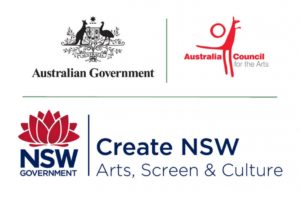
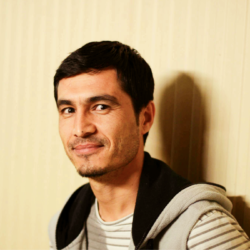 Sahib Nazari is a writer of Hazara descent from Afghanistan. He studied creative writing and literature at Griffith University. Other than his mother language Hazaragi, and adopted language English, Sahib is also literate in Dari/Fiarsi and Urdu.
Sahib Nazari is a writer of Hazara descent from Afghanistan. He studied creative writing and literature at Griffith University. Other than his mother language Hazaragi, and adopted language English, Sahib is also literate in Dari/Fiarsi and Urdu.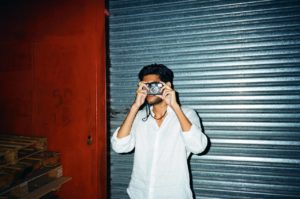 Anith Mukherjee is an artist based in Sydney. He has a brief publication history.
Anith Mukherjee is an artist based in Sydney. He has a brief publication history.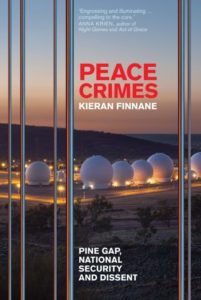 Peace Crimes: Pine Gap, National Security and Dissent
Peace Crimes: Pine Gap, National Security and Dissent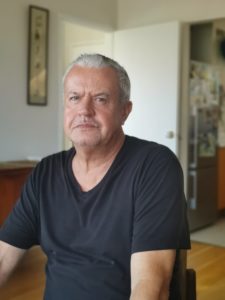 Peter Gilkes is a writer, artist and previously an operations and business manager based in Kuala Lumpur. He recently returned to Australia after working in SE Asia for nine years. He has had articles published with the Sydney Morning Herald and is now compiling a book of images and memories of travel from the last 30 years.
Peter Gilkes is a writer, artist and previously an operations and business manager based in Kuala Lumpur. He recently returned to Australia after working in SE Asia for nine years. He has had articles published with the Sydney Morning Herald and is now compiling a book of images and memories of travel from the last 30 years.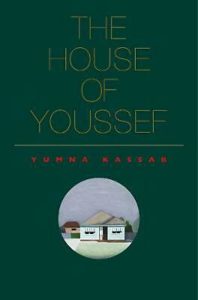 The House of Youssef
The House of Youssef 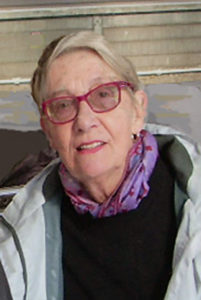 Brenda is a writer and artist of Wiradjuri and British heritage. She has written three poetry collections and her next, ‘Inland Sea’ will be published in 2021. Her poems and reviews appear in edited anthologies and journals, including Australian Poetry Journal, Overland, Quadrant, Southerly, Westerly, Plumwood Mountain and Best Australian Prose Poems 2020 (MUP).
Brenda is a writer and artist of Wiradjuri and British heritage. She has written three poetry collections and her next, ‘Inland Sea’ will be published in 2021. Her poems and reviews appear in edited anthologies and journals, including Australian Poetry Journal, Overland, Quadrant, Southerly, Westerly, Plumwood Mountain and Best Australian Prose Poems 2020 (MUP). Šime Knežević was born in 1985 and lives in Sydney. His debut poetry chapbook, The Hostage, was published by Subbed In. His poetry has appeared in Ambit (UK), Australian Poetry Journal, Cordite Poetry Review, Going Down Swinging, Magma (UK), SAND (Germany), Signal House Edition, The Stockholm Review of Literature, and elsewhere.
Šime Knežević was born in 1985 and lives in Sydney. His debut poetry chapbook, The Hostage, was published by Subbed In. His poetry has appeared in Ambit (UK), Australian Poetry Journal, Cordite Poetry Review, Going Down Swinging, Magma (UK), SAND (Germany), Signal House Edition, The Stockholm Review of Literature, and elsewhere. 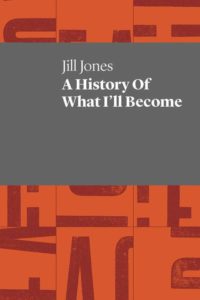 A History of What I’ll Become
A History of What I’ll Become 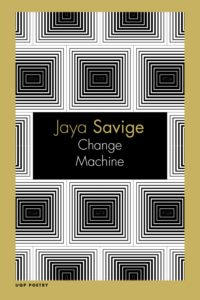 Change Machine
Change Machine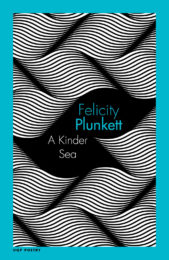 A Kinder Sea
A Kinder Sea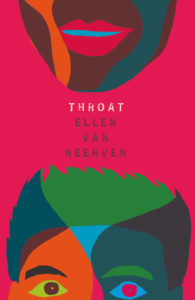 Throat
Throat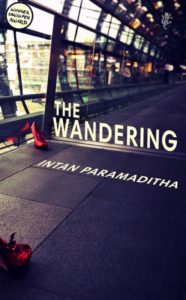 The Wandering
The Wandering  Petra White lives in London. Her most recent book is Reading for a Quiet Morning (Gloria SMH 2017).
Petra White lives in London. Her most recent book is Reading for a Quiet Morning (Gloria SMH 2017).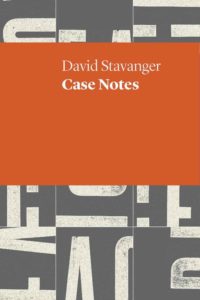 Case Notes
Case Notes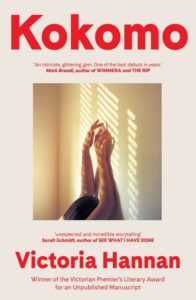 Kokomo
Kokomo Yumna Kassab is a writer from Western Sydney. She studied medical science and neuroscience at university. Her first book of short stories, The House of Youssef, has been listed for prizes including the Victorian Premier’s Literary Award, Queensland Literary Award and The Stella Prize. Her writing can be found online at Kill Your Darlings, Sydney Review of Books, Peril Magazine, Meanjin, The Sydney Morning Herald and now Mascara Literary Review.
Yumna Kassab is a writer from Western Sydney. She studied medical science and neuroscience at university. Her first book of short stories, The House of Youssef, has been listed for prizes including the Victorian Premier’s Literary Award, Queensland Literary Award and The Stella Prize. Her writing can be found online at Kill Your Darlings, Sydney Review of Books, Peril Magazine, Meanjin, The Sydney Morning Herald and now Mascara Literary Review. Nicole Smede is a musician, poet and educator of Worimi and European heritage, exploring a reclamation and reconnection to ancestry through language, poetry and song. Her work has been broadcast on national and international radio, published in anthologies and journals and features on ferries, in visual art and sound art works. Nicole is grateful to live, learn and create on Dharawal country. https://nicolesmede.com
Nicole Smede is a musician, poet and educator of Worimi and European heritage, exploring a reclamation and reconnection to ancestry through language, poetry and song. Her work has been broadcast on national and international radio, published in anthologies and journals and features on ferries, in visual art and sound art works. Nicole is grateful to live, learn and create on Dharawal country. https://nicolesmede.com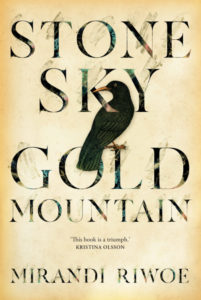 Stone Sky Gold Mountain
Stone Sky Gold Mountain Entries
Entries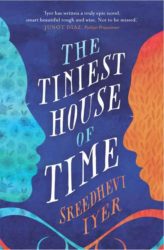 The Tiniest House of Time
The Tiniest House of Time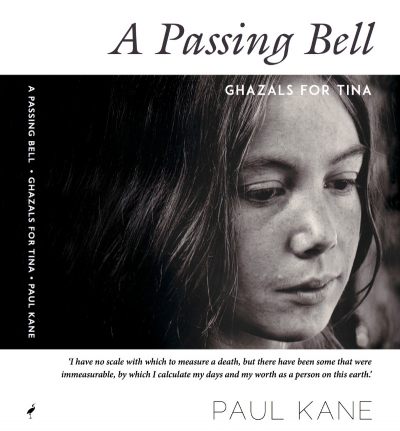 A Passing Bell: Ghazals for Tina
A Passing Bell: Ghazals for Tina Rose Lucas is a Melbourne poet. Her first collection, Even in the Dark (University of WA Publishing), won the Mary Gilmore Award in 2014; her second collection was Unexpected Clearing (UWAP, 2016). She is currently working on her next collection At the Point of Seeing.
Rose Lucas is a Melbourne poet. Her first collection, Even in the Dark (University of WA Publishing), won the Mary Gilmore Award in 2014; her second collection was Unexpected Clearing (UWAP, 2016). She is currently working on her next collection At the Point of Seeing.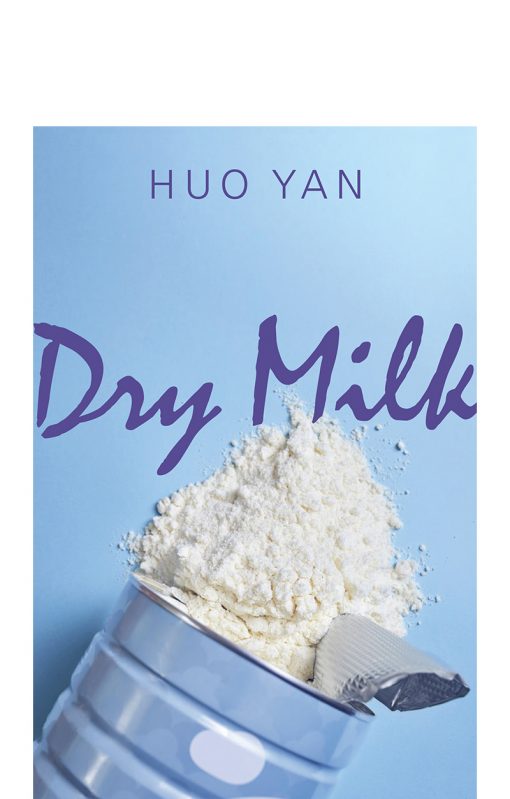 Dry Milk
Dry Milk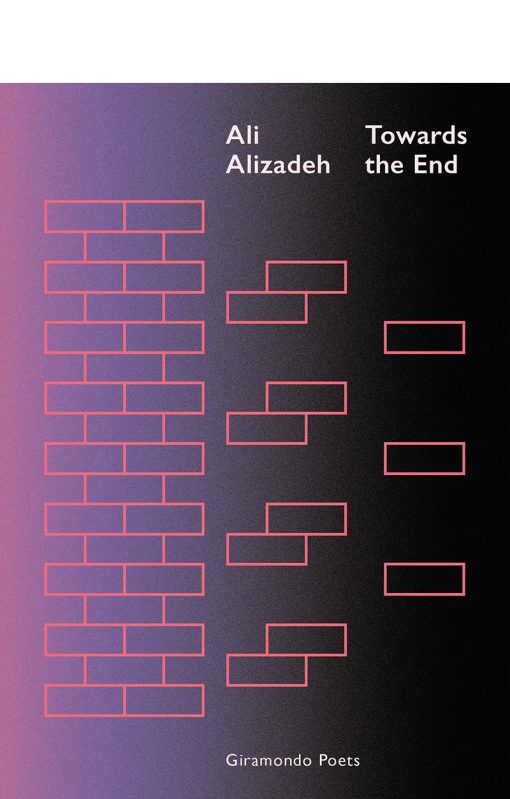 Toward the End
Toward the End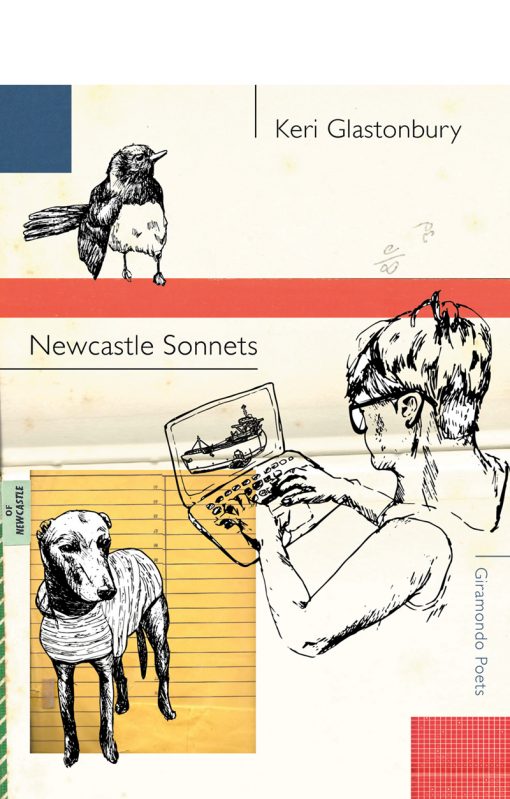 Newcastle Sonnets
Newcastle Sonnets Amanda Lucas-Frith lives on Wangal land in Sydney’s inner west with her partner and two children. She’s a communications and publishing consultant, and is currently completing the final subjects of a Master of Strategic Communication at UTS. She attended the 2019 Bread Loaf Writers’ Conference and is a member of Youngstreet Poets. Her poems have appeared in Snorkel and Cordite Poetry Review.
Amanda Lucas-Frith lives on Wangal land in Sydney’s inner west with her partner and two children. She’s a communications and publishing consultant, and is currently completing the final subjects of a Master of Strategic Communication at UTS. She attended the 2019 Bread Loaf Writers’ Conference and is a member of Youngstreet Poets. Her poems have appeared in Snorkel and Cordite Poetry Review.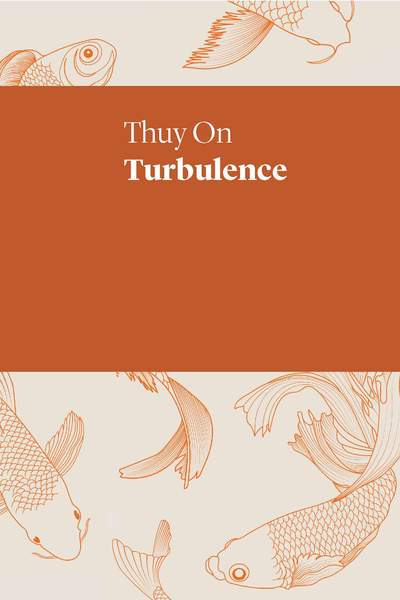 Turbulence
Turbulence Janette Chen is a Chinese-Australian writer from Lidcombe. She is a member of Sweatshop: Western Sydney Literacy Movement and the 2019 winner of the Deborah Cass Prize.
Janette Chen is a Chinese-Australian writer from Lidcombe. She is a member of Sweatshop: Western Sydney Literacy Movement and the 2019 winner of the Deborah Cass Prize. Anna Kortschak is an emerging writer who is frequently mobile. She has recently returned to Australia after almost twenty itinerant years in the Americas, Europe and the UK. Anna was runner up in the 2019 Deborah Cass Prize for Writing and winner of the 2019 Spring Nowhere Magazine Travel Writing Competition. Her writing and photos have been published in Nowhere Magazine, The Other Hundred, The Adventure Cycle Touring Handbook (3rd Ed.) and various other print and online publications. With a background in visual and performing arts Anna has worked extremely variously but most passionately – a aside from her writing – on a number of community development story-telling projects in Australia and internationally.
Anna Kortschak is an emerging writer who is frequently mobile. She has recently returned to Australia after almost twenty itinerant years in the Americas, Europe and the UK. Anna was runner up in the 2019 Deborah Cass Prize for Writing and winner of the 2019 Spring Nowhere Magazine Travel Writing Competition. Her writing and photos have been published in Nowhere Magazine, The Other Hundred, The Adventure Cycle Touring Handbook (3rd Ed.) and various other print and online publications. With a background in visual and performing arts Anna has worked extremely variously but most passionately – a aside from her writing – on a number of community development story-telling projects in Australia and internationally. Belinda is a part-time lawyer, adminstrative assistant and mother of two young boys. She is completing a Master of Creative Writing at the University of Sydney and has published work on-line, in the Grieve Anthology 2018 and in the University of Sydney Student Anthology 2016. ‘On Becoming One’ was runner up in the 2019 Deborah Cass Prize for Writing.
Belinda is a part-time lawyer, adminstrative assistant and mother of two young boys. She is completing a Master of Creative Writing at the University of Sydney and has published work on-line, in the Grieve Anthology 2018 and in the University of Sydney Student Anthology 2016. ‘On Becoming One’ was runner up in the 2019 Deborah Cass Prize for Writing.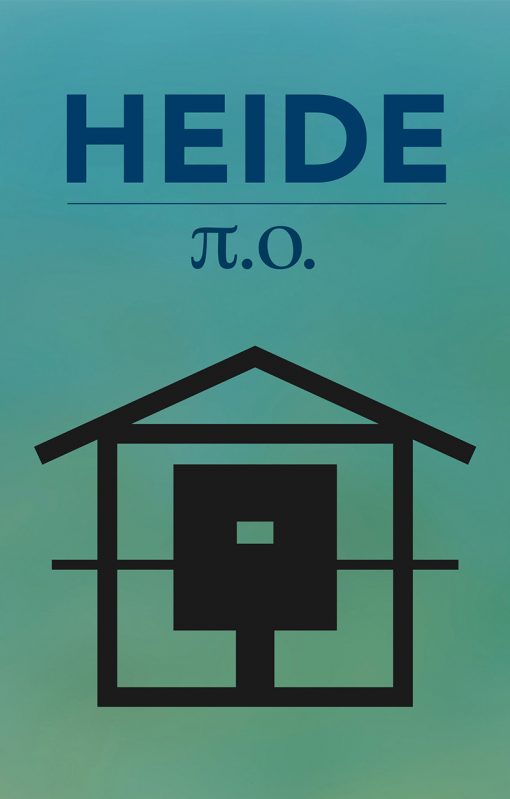 Heide
Heide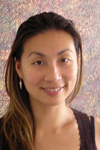 Debbie Lim was born in Sydney. Her poems have appeared in numerous anthologies including regularly in the Best Australian Poems series (Black Inc.), Contemporary Australian Poetry and Contemporary Asian Australian Poets (both Puncher & Wattmann) as well as journals such as Cordite, Mascara, Island and Magma (UK). Her prizes include the Rosemary Dobson Award and she was commended in the Poetry Society UK’s 2013 National Poetry Competition. Her chapbook is Beastly Eye (Vagabond Press). She is working on a full-length collection.
Debbie Lim was born in Sydney. Her poems have appeared in numerous anthologies including regularly in the Best Australian Poems series (Black Inc.), Contemporary Australian Poetry and Contemporary Asian Australian Poets (both Puncher & Wattmann) as well as journals such as Cordite, Mascara, Island and Magma (UK). Her prizes include the Rosemary Dobson Award and she was commended in the Poetry Society UK’s 2013 National Poetry Competition. Her chapbook is Beastly Eye (Vagabond Press). She is working on a full-length collection. The Girls
The Girls Dani Netherclift has been published in Meanjin, Cordite and Verandah. Her work was nominated for the 2018 Judith Rodriguez Prize and highly commended in the Cliff Green Short Story Competition.
Dani Netherclift has been published in Meanjin, Cordite and Verandah. Her work was nominated for the 2018 Judith Rodriguez Prize and highly commended in the Cliff Green Short Story Competition.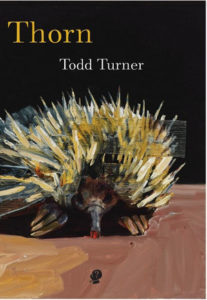 Thorn
Thorn
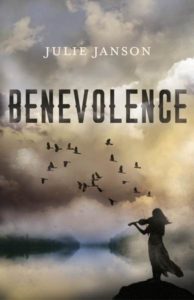 Benevolence
Benevolence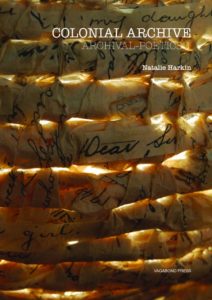 Archival Poetics
Archival Poetics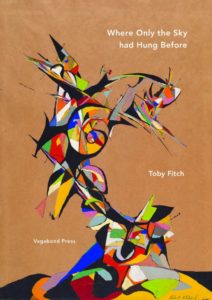 Where Only the Sky had Hung Before
Where Only the Sky had Hung Before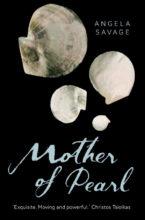 Mother of Pearl
Mother of Pearl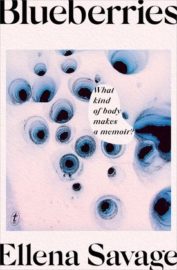 Blueberries
Blueberries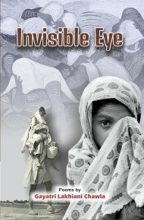 Invisible Eye
Invisible Eye A Constant Hum
A Constant Hum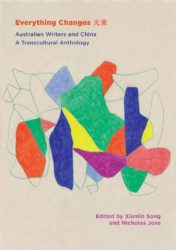 Everything Changes: Australian Writers and China, A Transcultural Anthology
Everything Changes: Australian Writers and China, A Transcultural Anthology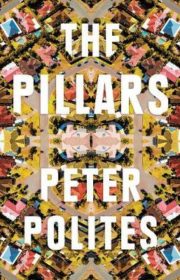 The Pillars
The Pillars 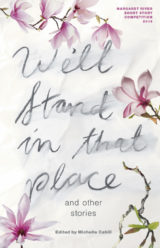 We’ll Stand in that Place and Other Stories
We’ll Stand in that Place and Other Stories 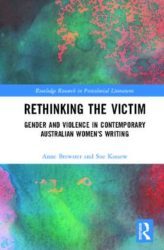 Rethinking the Victim: Gender and Violence in Contemporary Australian Women’s Writing
Rethinking the Victim: Gender and Violence in Contemporary Australian Women’s Writing On Shirley Hazzard
On Shirley Hazzard 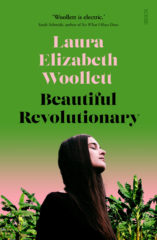 Beautiful Revolutionary
Beautiful Revolutionary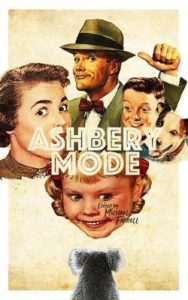 Ashbery Mode
Ashbery Mode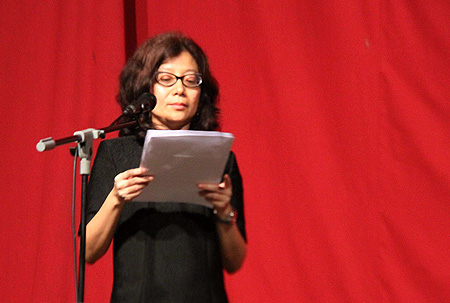 Linda Christanty is an Indonesian author and journalist. Her writing has been recognized by various awards including the national literary award in Indonesia (Khatulistiwa Literary Award 2004 and 2010), award from the Language Center of the Ministry of National Education (2010 and 2013), and The Best Short Stories version by Kompas daily (1989). Her essay “Militarism and Violence in East Timor” won a Human Rights Award for Best Essay in 1998. She has also written script for plays on conflict, disaster and peace transformation in Aceh. It was performed in the World P.E.N Forum (P.E.N Japan and P.E.N International Forum) in Tokyo, Japan (2008). She received the Southeast Asian writers award, S.E.A Write Award, in 2013.
Linda Christanty is an Indonesian author and journalist. Her writing has been recognized by various awards including the national literary award in Indonesia (Khatulistiwa Literary Award 2004 and 2010), award from the Language Center of the Ministry of National Education (2010 and 2013), and The Best Short Stories version by Kompas daily (1989). Her essay “Militarism and Violence in East Timor” won a Human Rights Award for Best Essay in 1998. She has also written script for plays on conflict, disaster and peace transformation in Aceh. It was performed in the World P.E.N Forum (P.E.N Japan and P.E.N International Forum) in Tokyo, Japan (2008). She received the Southeast Asian writers award, S.E.A Write Award, in 2013. Lara Norgaard is an editor, essayist, and literary translator from Colorado. After graduating from Princeton University in 2017, she served as Editor-at-Large for Brazil for Asymptote Journal and directed Artememoria, a free-access arts magazine focused on the memory of Brazil’s civil-military dictatorship. Her essays, literary criticism, and translations can be found in publications such as the Mekong Review, the Jakarta Post, Asymtptoe Journal, Peixe-elétrico, and Agência Pública. Currently, she is a Henry Luce Foundation Scholar at the Lontar Foundation in Jakarta, Indonesia and will begin her Ph.D. in comparative literature at Harvard University in September 2020.
Lara Norgaard is an editor, essayist, and literary translator from Colorado. After graduating from Princeton University in 2017, she served as Editor-at-Large for Brazil for Asymptote Journal and directed Artememoria, a free-access arts magazine focused on the memory of Brazil’s civil-military dictatorship. Her essays, literary criticism, and translations can be found in publications such as the Mekong Review, the Jakarta Post, Asymtptoe Journal, Peixe-elétrico, and Agência Pública. Currently, she is a Henry Luce Foundation Scholar at the Lontar Foundation in Jakarta, Indonesia and will begin her Ph.D. in comparative literature at Harvard University in September 2020.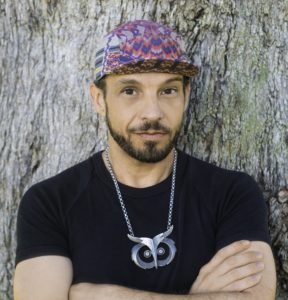 Scott-Patrick Mitchell (SPM) is a non-binary West Australian poet, writer and spoken word artist. SPM’s work appears in Contemporary Australian Poetry, The Fremantle Press Anthology of Western Australian Poetry, Solid Air, Stories of Perth and Going Postal. In 2015, SPM performed THE 24 HOUR PERFORMANCE POEM… which was exactly as it sounds. A mentor to many emerging West Australian poets and recipient of a 2019 KSP Writers Centre First Draft Fellowship, SPM is the coordinator for WA Poets Inc’s Emerging Poets Program.
Scott-Patrick Mitchell (SPM) is a non-binary West Australian poet, writer and spoken word artist. SPM’s work appears in Contemporary Australian Poetry, The Fremantle Press Anthology of Western Australian Poetry, Solid Air, Stories of Perth and Going Postal. In 2015, SPM performed THE 24 HOUR PERFORMANCE POEM… which was exactly as it sounds. A mentor to many emerging West Australian poets and recipient of a 2019 KSP Writers Centre First Draft Fellowship, SPM is the coordinator for WA Poets Inc’s Emerging Poets Program.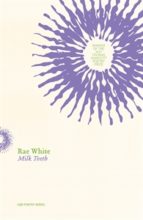 Milk Teeth
Milk Teeth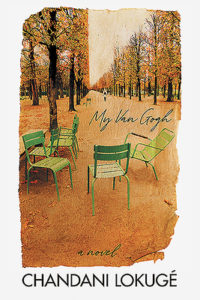 My Van Gogh
My Van Gogh


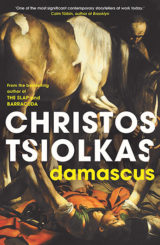 Damascus
Damascus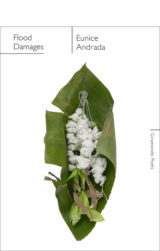 Flood Damages
Flood Damages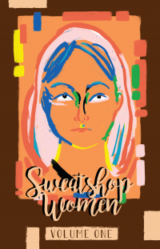 Sweatshop Women: Volume One
Sweatshop Women: Volume One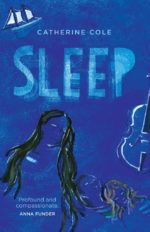 Sleep
Sleep Beth Spencer is the winner of the 2018 Carmel Bird Digital Literary Award for The Age of Fibs (fiction). Other books include the verse memoir Vagabondage (UWAP), and How to Conceive of a Girl (Vintage/Random House) which was runner up for the Steele Rudd Award. She writes across genres and forms, her ABC-radio pieces have been collected on the double CD Body of Words, and she is also a contributor to the podcast Climactic. She lives and writes on Darkinjung land, and has a website at www.bethspencer.com
Beth Spencer is the winner of the 2018 Carmel Bird Digital Literary Award for The Age of Fibs (fiction). Other books include the verse memoir Vagabondage (UWAP), and How to Conceive of a Girl (Vintage/Random House) which was runner up for the Steele Rudd Award. She writes across genres and forms, her ABC-radio pieces have been collected on the double CD Body of Words, and she is also a contributor to the podcast Climactic. She lives and writes on Darkinjung land, and has a website at www.bethspencer.com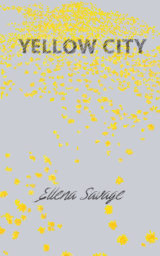 Yellow City
Yellow City